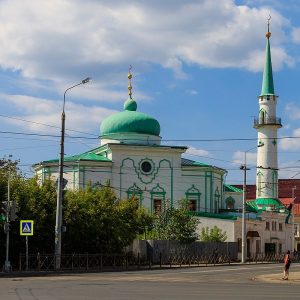
History of Islam in Russia can’t be separated from acts of extremism and separatism. For a period of time in the nation, Islam went through dark days from how it was connected with terrorism against the government all over the country. Most of the radical groups used to be concentrated in the north Caucasus region where the majority of the populations are Muslims. The Republic of Chechnya, Dagestan, and Tatarstan were the parts of Russia getting highlights from the violence. However, from the three republics above, Tatarstan was the only one who never took up arms and their leaders never let the Islamist extremists to take over the steering wheel of power. Tatarstan had successfully made Islam coexist peacefully with Christianity.
The Republic of Tatarstan has been living with Russia for about 500 years, and it has been one of the wealthiest oil and gas republics. Being an Islamic region, there are a lot of mosques in Tatarstan especially in Kazan, its capital. The famous ones are Kul Sharif Mosque and Bulgar Mosque, and there are seven other special mosques all over the city including Nurulla Mosque that we are about to see the 6 famous facts of.
1. An old mosque
Nurulla Mosque of Kazan was built between 1845 and 1849 with the funds from the Yunusov brothers. It is one of the 41 surviving mosques in Kazan and the most historic one. It is also an object of Russian cultural heritage.
2. It had many names
When first constructed, people called it with different names; Sennaya Mosque or Hay Bazaar Mosque because the location was so close to the Senny Market, Yunusovskaya Mosque like the name of the man who funded the construction, also the Seventh Cathedral Mosque.
3. Shut down during the Soviet era
In 1929, the function of the mosque was altered by the Soviet government from worshipping place to apartments and offices. The minaret was destroyed and only got restored when the mosque was returned to the believer in 1990. It was also the same year when the mosque was officially named Nurulla.
4. A simple classic building
Considering the time it was built, Nurulla mosque adopted medieval Volga Bulgaria and the Middle East style. It has two stories, a dome, and a minaret over the southern entry. The whole building uses white and turquoise color. Today, the mosque stands on 74/15 Ulitskaya Moskovskaya, just by the roadside. It has no special land or dedicated site to be constructed on, just a simple neighborhood mosque like Moscow’s Old Mosque or the Istoricheskaya Mechet. But the age of the building is what makes the mosque outstanding especially to people in Kazan.
5. The reconstruction
The Nurulla Mosque went through a reconstruction and restoration from 1990 to 1995. The shape and architectural model of the mosque still sticks to the original sketch from 1844 when the mosque was first planned. The form of the building is an elongated octahedron with three dimensional cascade and tiered construction. The oval interior of the main floor is divided by arches into prayer halls. Outside, the symmetrical volume with the central part protruding in height is covered by a keeled dome with an onion cupola. The dome on a low cylindrical base in the interior of the central hall reveals a hemisphere.
Mihrab ledge on the southern facade is missing. The romantic image of the mosque was formed largely due to the shape of the minaret, vividly reminiscent of Bulgarian minarets. For the first time after a centuries-old break in the monumental religious architecture of the Tatars, an attempt was made to unite the broken connection of times and traditions. A cylindrical barrel of a minaret thinning upwards is installed on a hexagonal platform with a cone-shaped coating. It is completed by a low tier with small rectangular openings associated with the shape of medieval towers.
The spiral staircase can be climbed to reach the circular balcony of the minaret. The interiors were reconstructed by the project of R.V. Bilyalov. A semicircular dome of turquoise color hovers over the hall. The stained glass windows of round windows cast colored spots of light onto the floor and walls of the hall. The prayer room on the first floor is lined with marble and decorated with a decorative fountain with a carved bowl. The monument of Tatar religious architecture, which is a landmark in its development, and marked the beginning of the spread of a new type of mosque with a grounded minaret at the end of the building. It is sustained in eclectic style of national-romantic direction.
6. The activities
Like any other mosques, Nurulla serves Muslims for these:
- Five-time prayers in a day
- Juma prayer
- Tarawih
- Islamic library
- Madrasa
Just like the Old Mosque in Moscow, Nurulla Mosque is not greatly visited by tourists because it is just a regular mosque by a busy street downtown. The surroundings are houses, offices, and other usual daily buildings. People may come to take pictures from the outside to appreciate the history and classic architecture of the building, but there is no tour to take them inside if they are non-Muslims. As for Muslims in Russia and neighboring countries, visiting Nurulla mosque could mean a personal pilgrimage and a way to learn the long history of Islam in the country where once communism and atheism ever had such a strong grip.
If you visit Tatarstan, you would most likely go to Kul Sharif, so why not taking a little trip to Nurulla Mosque too while you’re at it? Kazan has become a very convenient place for Muslim travelers to go to. So, those were the 6 famous facts of Nurulla Mosque in Kazan city you have just learned. Did you find anything interesting? Does it resemble a mosque you have ever gone to?
